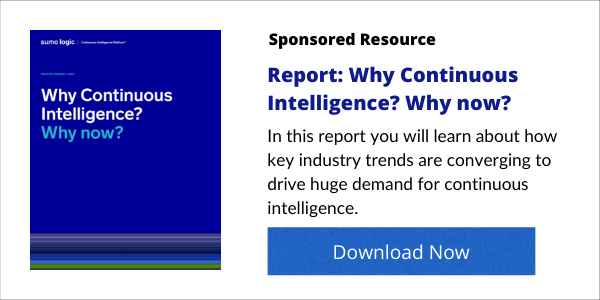
The path to AIOps in many states and in federal agencies is often guided by an AI Center of Excellence that develops best practices and captures internal knowledge.
Government agencies from federal to state levels are looking to AIOps to help them increase efficiencies, cut costs, and, most importantly, improve the services they deliver to their constituents.
Support is coming from the highest levels. In December, President Biden issued an executive order mandating the government be accountable “for designing and delivering services with a focus on the actual experience of the people whom it is meant to serve.” Additionally, the order noted that “Every interaction between the Federal Government and the public, whether it involves renewing a passport or calling for a status update on a farm loan application, should be seen as an opportunity for the Government to save an individual’s time (and thus reduce “time taxes”).”

With such marching orders, agencies have embraced AIOps as a way to help meet these mandates. For example, the U.S. General Services Administration (GSA) has explored several use cases for AIOps. One general application area is AIOps use in monitoring and optimizing application performance. AIOps tools are being used to generate an Apdex (Application Performance Index) score for different each application. (Apdex is an open standard used for measuring application performance and offers a consistent way to “measure what matters” across applications.)
AIOps is also used to monitor performance degradation and outages. That information is used then used to help identify the source of problems contributing to a poorer user experience. AIOps is needed due to the complexity of the many systems that deliver government services. In many cases, diagnosing the impact on a simple task (a user’s query about the status of a tax payment or issuance of a passport) might require assimilating and analyzing information from multiple systems, applications, and even third-party services.
See also: Continuous Intelligence Insights
State-level AIOps interest grows
State governments are also trying to improve constituent services. This comes at a time when many state agencies, like their corporate counterparts, are rapidly digitally transforming services and operations.
A StateScoop article this month highlighted the use of AIOps in one state. It noted that AIOps was helping the state of Utah “saving officials from countless hours of monitoring for vulnerabilities and network inefficiencies.” Additionally, the state’s CTO noted that the “data gives you the ability to leverage your valuable resources that we’re all short on and be able to get more out of the data in order to address the challenges we have on a day-to-day basis with operations and security.”
The path to AIOps in many states and in federal agencies is often guided by an AI Center of Excellence. Such centers are increasingly eyed as a way for organizations in today’s digital are to keep up with the rate of innovation and to benefit from growing internal knowledge and best practices.






